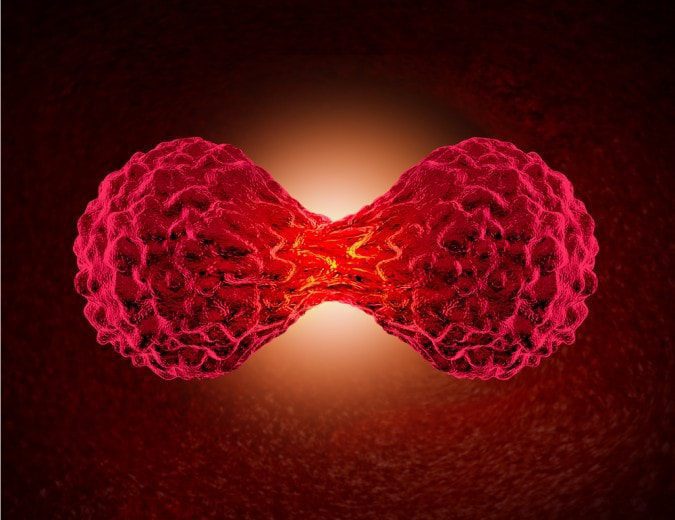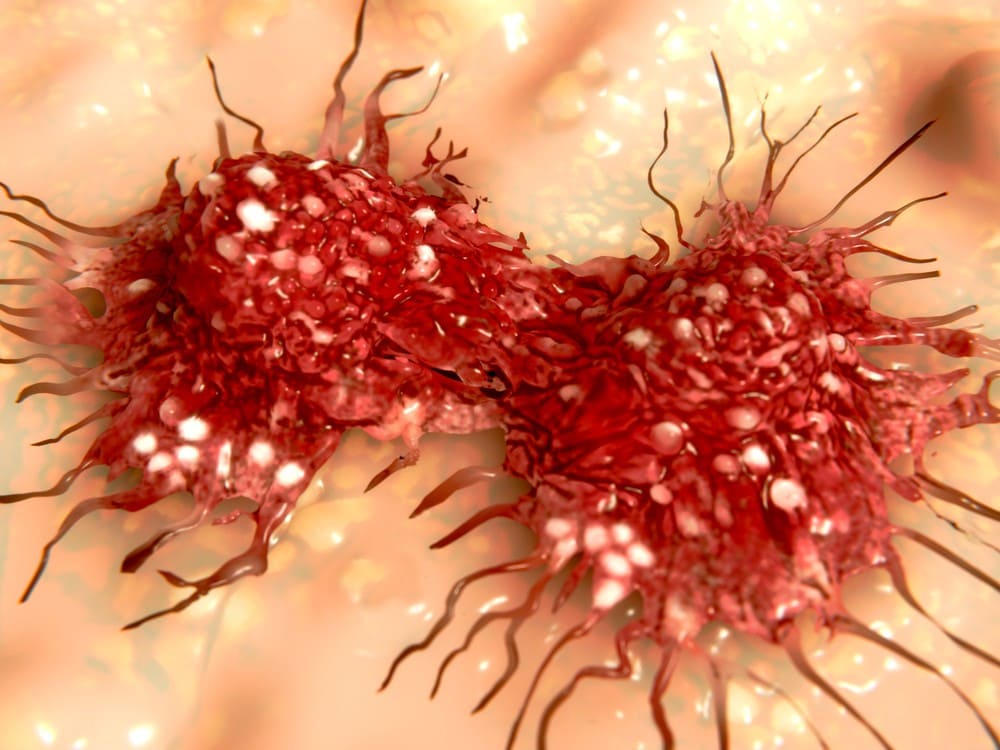Over the years, I’ve found that many people don’t seem to realize that the vast majority of malignancies aren’t palpable and don’t create symptoms for several years, and sometimes decades. This is a critical point to understand, as our choices today are unmistakably what determine our risk for cancer and most chronic diseases in the years ahead — even thirty, forty, fifty years ahead.
When looking to understand the pace at which cancer grows and spreads, the main concept to consider is doubling time, which is the amount of time it takes for one cell to divide or for a group of cells (like a benign or malignant tumor) to double in size.
Doubling time is different for various tumors, but if you know the size of a tumor at two different points in its lifespan, you can calculate doubling time with the following online resource: Doubling Time.
To put this idea into numbers that are easily visualized, let’s say that a 1 millimeter mass (about one-fifth the diameter of a dime) is detected within lung tissue on a CT scan. If this same mass is measured to be 15 millimeters (the diameter of a dime) two years later, doubling time for this mass is 105 days.
Here’s the take-home point: a 1 millimeter cluster of cancerous cells typically contains somewhere in the ball park of a million cells, and on average, takes about six years to get to this size. Generally, a tumor can’t be detected until it reaches the 1 millimeter mark.
So to develop a mass that is likely to be problematic (say, about 5 centimeters to put a number to this example), make no mistake in understanding that this is a journey of many years.
To put it another way, a person doesn’t go from being relatively healthy to having cancer suddenly appear and spread throughout his body within a few months or even a year. To have a growth that is visible to the eye or cancer that has metastasized, generally, it’s scientifically sound to state that the cancerous mass began developing many years ago.
I like to share this information with clients because I find that it tends to heighten awareness of how important today’s food and lifestyle choices are in determining our risk for disease in the future.
It’s simple: what we do today determines our risk for disease tomorrow.
With this thought in mind, we can strive to apply the following guidelines to our daily choices to reduce risk of most chronic, degenerative conditions, including almost all types of cancer:
- 1. Limit intake of refined sugar.
- 2. Limit intake of unhealthy oils that are rich in polyunsaturated fatty acids.
- 3. Limit exposure to ionizing radiation and electromagnetic fields.
- 4. Avoid use of oral contraceptives and hormone replacement drugs whenever possible.
- 5. Minimize exposure to exogenous toxins like pesticides, herbicides, heavy metals, dioxins, asbestos, volatile organic compounds, and polychlorinated biphenyls.
- 6. Minimize or completely avoid use of recreational drugs.
- 7. Optimize vitamin D status.
- 8. Work at getting regular aerobic exercise and restful sleep.
- 9. Strive to be emotionally balanced i.e. avoid living in a fight/flight state where sympathetic nervous system output dominates parasympathetic (rest/digest) tone.
I think it’s worth noting that the concept of cancer growth happening at a predictable pace applies to all major types of chronic disease. Risk of a cerebrovascular accident (stroke) is determined by how healthy our blood vessels and blood pressure are over decades, not by a sudden transient spike in pressure. Risk of chronic obstructive pulmonary disease is determined by all of the substances that our lungs have been exposed to since day one. And so on and so forth.
Please consider sharing this post with family and friends who are under the illusion that cancer and other chronic diseases are mostly a matter of bad luck. Certainly, there are situations where genetic predispositions and environmental circumstances are not ideal, but in most cases, we can reduce overall risk by being mindful of our daily choices.
Dr. Ben Kim is a chiropractor and acupuncturist who runs a residential fasting and chiropractic clinic in Ontario, Canada. Click here to read more of Dr. Ben Kim’s writings on health and wellness.

